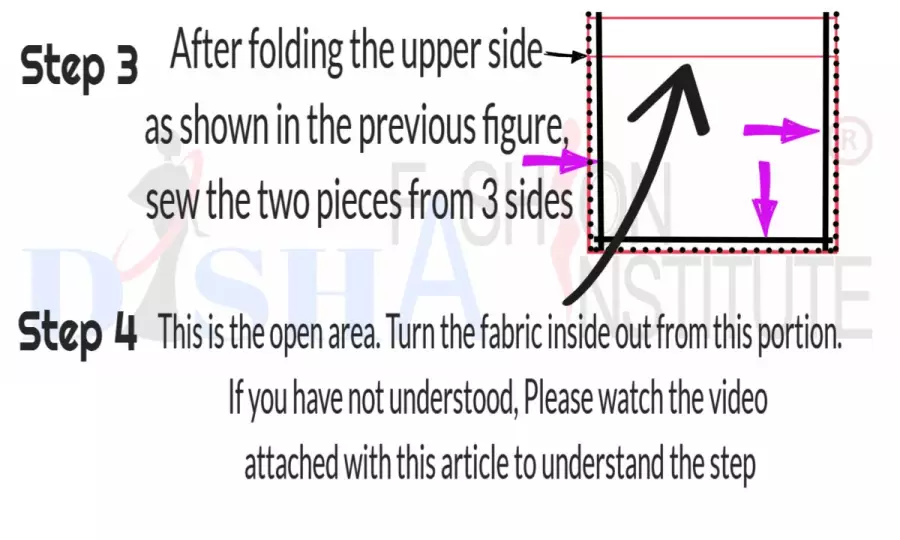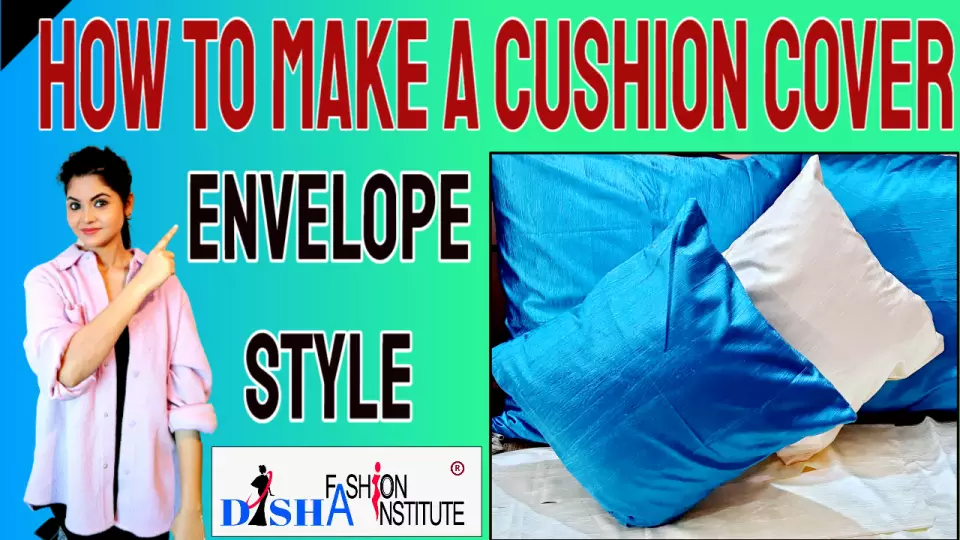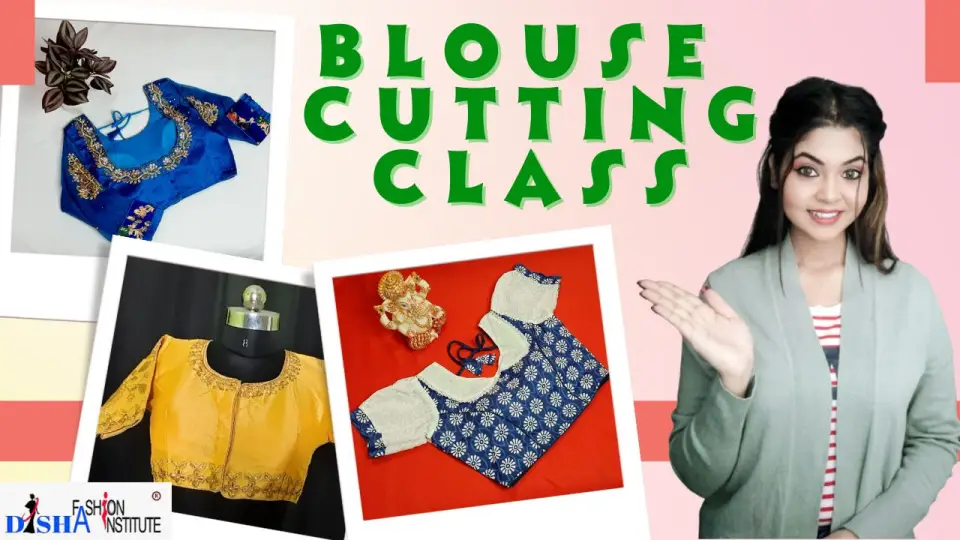How to make a cushion cover without a zipper: In 4 easy steps
If you are looking for how to make a cushion cover without a zipper or how to make an envelope pillow cover with two pieces of fabric then this blog post is for you. Making your own cushion cover can be a fun and creative way to add your own personal touch to your home decor. Plus, it can save you money compared to buying ready-made covers. The great thing about making your own is that you can also choose your own fabric, so it can match the style of your room perfectly.
If you're wondering how to make a cushion cover without a zipper, then this article is for you. This tutorial will show you how to make a simple envelope-style cover that doesn't require any special sewing skills. All you need is some basic sewing supplies and 5 minutes in hand. You can also make an envelope pillow cover with two pieces of fabric using the same process shown below.
Table of Contents:
- How to make a cushion cover without a zipper: In 4 easy steps
- Materials Required to make a cushion cover without zipper
- Construction process of a cushion cover without zipper
- Step by step video tutorial to make a cushion cover without zipper
- Fabric used for a cushion
- Difference Between Pillow and Cushion
- List of Certificate Courses offered by Disha Fashion Institute
- Other Topics
Materials Required to make a cushion cover without zipper
- Two piece of fabric. One piece needs to be 17 inches by 18 inches and another piece would be 17 inches by 23 inches.

- A sewing machine. If you do not have sewing machine then you can sew by hand also.
- Measuring tape
- scissor
- thread
- Ball pin or cloth pin
- Chalk or fabric marker
Construction process of a cushion cover without zipper
Step 1: Hem the upper part of both of the pieces
Firstly we have to fold half inch twice i.e. total 1 inch fabric on the top portion of both the fabric. This method is called double folded hem. If you want to understand how to do hem, you can watch the following video. In the video hemming is done for 2 inches, but here we will consider 1 inch only(double fold, half inch each). After the hemming is done the length of the fabric pieces will be reduced to 17 inches and 22 inches instead of 18 inches and 23 inches.
Step 2: Overlap the two pieces of fabric
Put the smaller fabric on the top of the longer fabric length wise. As shown in the figure. The longer fabric at the bottom and the shorter piece on the top. If your fabric has an outer side and inner side. Suppose the fabric has a design or it is a printed fabric, keep the printed part inside and the reverse part out side. That means when you overlap the two fabrics the printed side should face each other and the non printed part or the inverse part should be outside. Because after the sewing is done you will turn the fabric inside out in the step 4.

The bottom fabric or the longer fabric will be 5 inch longer than the other one. Because the longer has the length 22 inches and the shorter has the length 17 inch. The remaining 5 inch fabric left is to be folded as shown in the figure. While folding mark a half inch from the top fabric piece end and then fold from there.

Step 3: Sew the two pieces of fabric from 3 sides
Now secure the stitching line with the ball pin or cloth pin. Pinning the fabric helps hold the pieces together so that it will be easy to sew the pieces. Keep a half inch seam allowance. The stitching is to be done on all the three sides as shown in the figure.
Step 4: Turn the fabric inside out
Turn the fabric inside out so that your printed side or designer side of the fabric will come out. Your cushion cover is ready.

Step by step video tutorial to make a cushion cover without zipper
Fabric used for a cushion
Making a cushion cover is as easy as 1, 2, 3, 4. You still need to know what kind of fabric would be perfect for your cushion cover, not just any fabric will do. Of course, you can choose from our wide selection of fabrics online but if you would like to make it yourself, here are some fabrics you can choose from.
Cotton: This is the most common fabric for cushion covers. It’s easy to find and it’s very affordable. It’s also easy to work with and it can be found with a wide variety of colors and patterns.
Polyester blend: This type of fabric is also very common. It’s a mix of polyester and cotton so it’s easy to work with and it’s also easy to clean. However, it’s not as durable as cotton.
Silk: Silk is the most luxurious type of fabric that you can use for your cushion cover. It’s very smooth and soft. However, it’s also very expensive.
Difference Between Pillow and Cushion
You can make both the envelope-style pillow cover or envelope-style cushion cover using this construction method described in this blog post. But many people do not understand what is the difference between a cushion and a pillow. So I have described the difference in few words. A pillow is usually a common item that is used during sleep. This pillow is a soft cushion that is placed under the head or neck. It is used to support the head and neck when sleeping in a lying position. On the other hand, a cushion is generally a seat-like soft piece of thick padding. It is used to make a seat more comfortable or to soften the hard surface of a seat. Cushion is considered the same as a pillow when it comes to the name. Cushion is a kind of pillow that is used for sitting.
List of Certificate Courses offered by Disha Fashion Institute
| Tailoring Course Name | Duration | Admission Fee | Monthly Fee | Syllabus |
| Diploma in Sewing and Designing | 6 Months | 530/- | 700/- | Basic Tailoring Course |
| Diploma in Dress Designing | 9 Months | 900/- | 1000/- | Advanced Tailoring Course |
| Blouse Designing Course | 4 Months | 1000/- | 1200/- | Blouse Designing Course |
| Kurti Designing Course | 4 Months | 1000/- | 1200/- | Kurti Designing Course |
![[DISHA] The Best Tailoring School](/media/plg_jspeed/cache/images/Disha_logo.webp)








Add comment